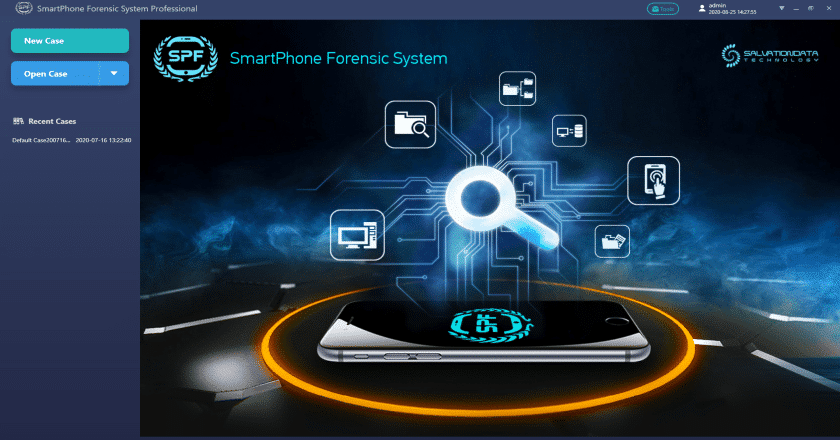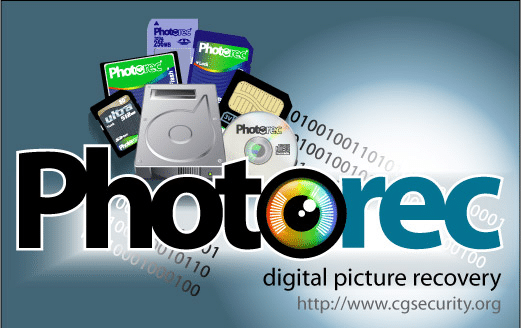Easy Steps to Recover Deleted Videos without Stress

-
Content
- Introduction
- Common Methods & Tools Used for Video Recovery
- Step-by-Step Video Recovery Guide
- Additional Tips and Considerations
- Conclusion
-
Content
- Introduction
- Common Methods & Tools Used for Video Recovery
- Step-by-Step Video Recovery Guide
- Additional Tips and Considerations
- Conclusion
Introduction
Video files in the current digital era are more than simply material they are colorful memories preserved in digital format, capturing everything from routine occurrences to significant occasions. These digital assets are very valuable, regardless of whether they are professionally produced clips from milestone celebrations or unscripted laugh videos shot on an Android mobile. The accidental deletion of such videos can evoke a sense of loss, turning joyous memories into a source of frustration. This is especially true when we consider the ease with which videos can be lost on widely used platforms like Android, making the need to recover deleted videos from Android a common and pressing concern.
As we embark on this journey together, let this article serve as your guide, illuminating the path to recovering deleted videos Android users often seek. From leveraging advanced digital forensics software to understanding the critical role of forensic reports in the recovery process, we cover all you need to know to restore your precious memories and safeguard them for the future.
Common Methods & Tools Used for Video Recovery
When delving into the complex realm of data recovery, it is vital to grasp the fundamental principle that deleted files, particularly videos, are not instantaneously eradicated from the device. Instead, the system designates the space they occupied as re-usable, preserving the integrity of the original data until it is overwritten. The preservation of “residual data” presents a potential avenue for recovery, providing a ray of optimism amidst an initially daunting digital landscape. Utilizing this principle as a foundation, numerous techniques and applications have been devised to aid in the recovery of misplaced video files, each featuring its own distinct methodology and practicality.
1. Video Recovery Software
The forefront of this battle against data loss is occupied by specialized video recovery software, designed to scour the nooks and crannies of your storage devices in search of recoverable video files. Among the plethora of options available, certain tools stand out for their efficiency, user-friendly interfaces, and robust recovery capabilities:
- Recuva: Boasting a user-friendly interface, Recuva offers deep scan options to recover files from damaged or formatted disks, making it a favored choice for both novices and professionals.
- DiskInternals Uneraser: This tool specializes in the recovery of deleted video files from a variety of storage media, highlighting its versatility with an intuitive recovery wizard. Contact to apply for a Free Trial now!
- EaseUS Data Recovery Wizard: Renowned for its powerful scanning algorithms, EaseUS can retrieve videos lost due to almost any scenario, including partition loss, formatting, or virus attacks.
- SPF Pro (SmartPhone Forensic System Professional): Tailored for mobile devices, SPF Pro excels in recovering videos from smartphones, providing a comprehensive solution for mobile forensics investigations. Click here to Update your software!
- VIP 2.0 (Video Investigation Portable): A specialized tool designed for law enforcement and private investigators, VIP 2.0 focuses on the recovery and analysis of video data for forensic purposes.
2. File Carving Techniques
Beyond software programs, file cutting appears as a powerful technique for reassembling video files from unprocessed data slivers. This method is very useful in complicated recovery settings since it doesn’t rely on file system information and instead pieces together recoverable files by analyzing the binary sequences of storage media.
3. Backup Recovery
The adage “prevention is better than cure” finds resonance in the context of backup recovery. Regularly backing up video files can simplify the recovery process, enabling users to restore lost content from their backup solutions with minimal fuss.
4. Disc Imaging
Finally, disc imaging offers a dual benefit; it not only aids in the recovery of deleted videos but also serves as a preventive measure against further data loss. By creating a sector-by-sector copy of the storage medium, disc imaging allows for the preservation of data in its entirety, facilitating recovery efforts without risking additional data corruption or loss.
Step-by-Step Video Recovery Guide
To successfully retrieve lost memories, navigating the world of video recovery requires a planned strategy that combines the appropriate tools with logical processes. This manual provides a clear and confident approach through four essential techniques, enabling users to start their recovery process.
1. Guide for Data Recovery Software: Utilizing SPF Pro
- Choosing Reliable Software: Choosing reliable data recovery software is the first step in the process and is crucial to its success. With a customized video recovery system, SPF Pro (SmartPhone Forensic System Professional) is unique in its ability to navigate the complex world of Android smartphones.
- Installation: The next step is to go to the official website of SalvationDATA to download SPF Pro. Usually, to finish the setup, this step comprises downloading the program from the official website, launching the installer, and adhering to the on-screen directions.
- Launching the Software: With SPF Pro installed, launch the application. The initial interface may prompt you for basic configuration settings or device connection details. It’s crucial to ensure that your Android device is connected to the computer via USB and that USB debugging is enabled on the device to facilitate a seamless connection.
- Starting Recovery: The user interface of SPF Pro helps you choose the device that you want to retrieve movies from. After you’ve chosen your device, find the data recovery area and pick the restore deleted files option. Next, depending on the amount of data on the device, the program searches for video files that can be recovered. This procedure might take some time. When it’s finished, you can see which films are recoverable, choose the ones you want to recover, and start the recovery process to save the recordings in a safe place.
2. Guide for File Carving Techniques
- Understanding of File Carving: By extracting data based on content patterns and file structures, file carving goes beyond conventional recovery techniques and is not reliant on file system information. This method works particularly well in complicated situations when information is either missing or damaged.
- Basic Techniques: Essentially, file carving is searching the storage media for identifiable file signatures, also known as headers, that identify the beginning of a file and footers, that indicate its conclusion. This disk scanning procedure finds areas on the disk that could have intact files on them.
- Tools and Software: File carving may be facilitated by a variety of tools, including commercial programs with more sophisticated functionality and open-source programs like Photorec. A tool’s selection is often influenced by the particulars of the recovery situation, including the file formats that need to be recovered.
- Considerations: Although file carving can yield significant benefits, it necessitates a discerning approach to manage the enormous amounts of data it may uncover, including potentially corrupted or incomplete pieces. It is critical to maintain practical expectations and thoroughly examine the data that has been recovered.
3. Guide for Backup Recovery
- Understanding of Backup: Emphasizing the importance of preemptive measures, backup recovery relies on the existence of previously created copies of data, serving as a fail-safe in the event of data loss.
- Types of Backups: Incremental backups and full system images are both types of backups, and each serves a distinct purpose. Incremental backups capture modifications since the last backup, whereas full backups provide a comprehensive snapshot of the entire system.
- Recovery Strategies: The initial step in recovering a lost video is to locate the most recent backup that contains the file. Navigate to the restore function utilizing the backup software or system settings, then select the relevant backup in order to recover the deleted videos.
4. Guide for Disc Imaging
- Understanding of Disk Imaging: Disk imaging creates an exact replica of a storage medium, capturing every bit of data for recovery or preservation purposes. This method is invaluable for maintaining the integrity of data during the recovery process.
- Choosing the Right Software: Select software capable of creating and managing disk images, such as Clonezilla or Acronis True Image. Consider factors like compatibility with your storage medium and the ability to handle the size of the data being imaged.
- Performing the Disk Imaging: Connect the storage device to your computer and launch the disk imaging software. Follow the software’s instructions to select the source disk for imaging and specify the destination for the image file. Initiate the imaging process, ensuring that the software creates a sector-by-sector copy of the disk.
Additional Tips and Considerations
In the journey to safeguard digital treasures, particularly video files, adopting a proactive stance is indispensable. Beyond the immediate steps of recovery, there are broader strategies and considerations that fortify your digital resilience against potential losses. This segment delves into pivotal advice and precautions, ensuring that your endeavors to recover deleted videos are bolstered by foundational practices in data management and protection.
1. Embracing Backup Strategies
The Foundation of Data Security: The best defense against data loss is regular backups, which provide a safety net that may return your digital life to what it was before the loss. You can make sure that current and pertinent video files are always recoverable by putting in place a regular backup schedule, which may be set to run on a daily, weekly, or other schedule that suits your data creation pace.
Diversifying Backup Solutions: Use a variety of backup and recovery techniques, such as external hard drives and cloud services. The 3-2-1 backup rule, which refers to this diversification and offers full coverage against a range of loss situations, lowers risks and provides two local copies of your data on various media and one off-site copy.
2. Navigating Deletion with Care
Immediate Actions Post-Deletion: In the event of accidental deletion, the immediate response can significantly impact the recovery outcome. Refrain from installing new applications or saving additional files to the device, as these actions might overwrite the digital evidence needed for successful recovery. Instead, initiate the recovery process using a trusted digital forensics tool as soon as possible.
Choosing the Right Recovery Approach: Selecting an appropriate recovery method is crucial. Whether it’s utilizing dfir tools, engaging in file carving techniques, or resorting to disk imaging, the choice should align with the complexity of the recovery scenario and the specifics of the data loss.
3. Engaging Professional Assistance
For intricate recovery situations or when dealing with forensics cyber security concerns, seeking professional assistance can be invaluable. Experts equipped with specialized mobile forensics tool and DFIR tools can navigate complex recovery tasks, ensuring that your data is retrieved with the utmost care and expertise.
You may strengthen the security measures around your priceless video assets by including these extra pointers and considerations into your digital stewardship procedures. Creating a digital environment ahead of time that keeps your milestones and memories safe from the unpredictability of data loss is just as important as recovery.
Conclusion
In this comprehensive exploration of how to safeguard and recover our digital legacies, we’ve traversed the spectrum of methodologies and tools designed to restore lost video files. From the initial emphasis on leveraging video recovery software like SPF Pro and EaseUS Data Recovery Wizard, to the nuanced techniques of file carving and backup recovery, each strategy has been curated to address the multifaceted scenarios of video loss. The article also highlighted the critical role of disk imaging in preserving the integrity of data for future recovery efforts.
As we conclude, the invitation to embark on the journey of how to recover deleted videos without succumbing to stress stands. The steps delineated herein are more than just a recovery protocol; they are a testament to the resilience inherent in our digital interactions. By adhering to these guidelines, the path to reclaiming your cherished digital memories is not only possible but paved with clarity and confidence. The journey towards digital resilience, underscored by informed action and strategic foresight, ensures that our most treasured moments, encapsulated in videos, remain within reach, defying the impermanence of digital existence.







